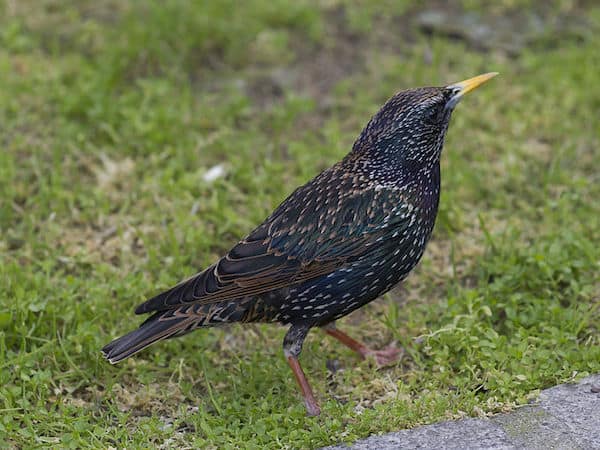Look For
An adult male is all black with a pale eye. Plumage can appear glossy purple and green in bright sunlight. They are about 9 inches in length. Their tail is square-ended and much shorter than those of grackles. Telling breeding-season male rusty and Brewer’s blackbirds apart can be tricky. Adult male Brewer’s never takes on any rusty color and has a slightly thicker, shorter bill than the rusty. Female Brewer’s are a plain, grayish brown overall with a dark eye (female rusty blackbirds have a pale eye).
Listen For
A Brewer’s blackbird’s song is shrill and unmusical: ksh-ree! Call is a loud chak!
Find It
Brewer’s blackbird is very common in a variety of habitats in the West, from parking lots to farm fields and mountain meadow edges. They are often seen on ground, walking, jerking its head forward with each step, much like a chicken. They join huge mixed-species blackbird flocks in winter.
Feeding Behavior
Brewer’s blackbirds are very opportunistic feeders. They consume insects, grains, weed seeds, and fruit. Most foraging takes place in open areas on the ground because their long legs make foraging awkward at elevated, sideways positions.
Nesting Behavior
The female Brewer’s blackbird claims the nest site and defends it aggressively. The nest is constructed with an outer rim of coarse stems and twigs and lined with dried grasses, rootlets, and hair. The female will lay about five eggs per brood and incubate for 12 to 13 days. Young Brewer’s blackbirds fledge at 12 to 16 days old not being able to fly but they learn rapidly. They merge into a flock with their parents.
Wow!
This species was discovered by John James Audubon on his final expedition in 1843 and named for his friend Dr. Thomas Brewer, a Boston ornithologist, who probably never saw a live Brewer’s Blackbird.
Hear the Brewer’s blackbird:




